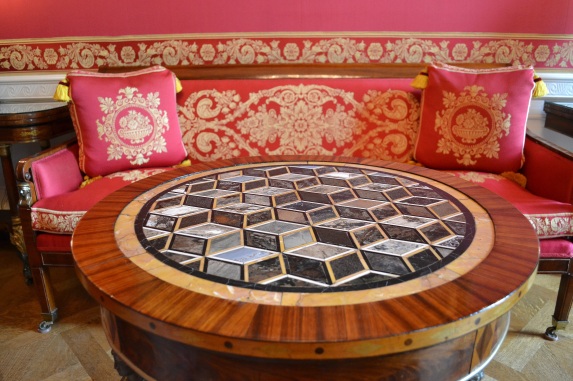This year marks the 50th anniversary of the 1964 World’s Fair in New York City. Not unlike the modern Olympics, the Fair didn’t turn a profit, but it hosted months of culturally significant spectacles. The Ford Mustang was introduced, Walt Disney launched the It’s a Small World ride, Andy Warhol mocked politicians with some controversial pop art, civil rights activists staged protests blocking highway ramps, the Beatles played in Shea Shadium, and Bob Dylan infamously used an amp.
 |
| The Unisphere on my visit in June |
.jpeg) |
| Vatican Pavilion at Flushing Meadows. Collection of the NYPL. |
And so on October 5, 1965, Pope Paul VI became the first pope to set foot on American soil. He spent only fourteen hours in NYC, establishing the usual cathedral-stadium-political arena template for future papal visits. After landing at the new JFK Airport in Queens, he spent most of his time in Manhattan at a mixture of modern and old-school locations. He visited St. Patrick’s Cathedral and met with President Johnson at the Waldorf Astoria hotel. The Holy Father also addressed the United Nations, warning that “Politics do not suffice to sustain a durable peace.” Later he said Mass at Yankee Stadium, not Moses’ brainchild Shea Stadium (ooh burn!).Finally, on his way out of town, Paul VI did stop at the Flushing Meadows fairgrounds. Today a marble bench marks where he stood.
Pope Paul VI’s whirlwind tour wasn’t as substantial as later papal visits, but it was surely a landmark moment for American Catholics. Only a few years before, John F.Kennedy had become the first Catholic president and a beloved political figure. Seeing the Church’s leader welcomed as an international dignitary must have cemented the fact that “papists’ had been accepted as true Americans, not a dangerous superstitious group swearing loyalty to a foreign power. Also, American Catholicism was no longer just mission territory; it was a major wing of the Church garnering Vatican attention! Eleven years later Paul VI would canonize New Yorker Elizabeth Ann Seton as the first American-born saint, further establishing the United States’ role in Catholic history.
 |
| Pope Paul VI window in St. Philomena church, Livingston, NJ. |
I found evidence of this papal euphoria in a parish near me in New Jersey. With its simple yet vaguely colonial style, St. Philomena was probably built in the early 1970s before post-Vatican II modernism had really caught on. The ample stained glass windows depict mysteries of the rosary, local bishops, and … Pope Paul VI’s NYC visit. The window is amazing and bordering on souvenir-store kitch: Paul VI raises his hands in blessing amidst the Stars and Stripes, St. Patrick’s, the UN, the Empire State Building, and the Statue of Liberty. (Sadly, the Unisphere did not make the cut.) A panel at the bottom notes the date of the pontiff’s visit. Perhaps some parishioners fondly remembered attending the Mass in Yankee Stadium and donated the window? I’ll be on the lookout for more Paul VI commemorations in the area. American Catholicism: if it can make it here, it can make it anywhere.
If you want to learn more about the 1964 World’s Fair, I highly recommend Joseph Tirella’s new book Tomorrow-Land: The 1964-65 World’s Fair and the Transformation of America, from which I got much of the information in the post. If you find yourself in Grand Central this fall, you should also check out this free exhibit.



























